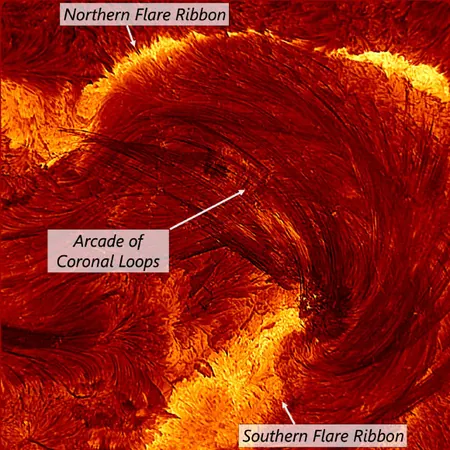
Unlocking Quantum Computing: The Game-Changing Potential of 'Neglectons'
2025-08-16
Author: Daniel
In an astonishing breakthrough that could reshape the landscape of quantum computing, mathematicians have revived a class of previously cast-off particles known as neglectons. This new perspective could lead to a more robust form of quantum computing, overcoming the fragility that has long plagued this cutting-edge technology.
Quantum computers have long been championed for their ability to solve complex problems that classical computers cannot tackle. They utilize principles like superposition, allowing qubits—quantum bits—to exist in multiple states simultaneously, much like Schrödinger’s famous thought experiment with his paradoxical cat. However, this remarkable potential comes with a significant drawback: qubits are extremely delicate and easily disrupted by their surroundings, making the construction of stable quantum computers a daunting task.
A recent study published in the prestigious journal Nature Communications sheds light on this issue by introducing a new method that pairs Ising anyons—quasiparticles pivotal to topological quantum computing—with previously overlooked mathematical concepts. These discarded elements have been dubbed 'neglectons'.
Ising anyons operate uniquely in two-dimensional spaces, storing and processing information not in the particles themselves but through their interactions—specifically the way they braid around one another. This braiding offers a level of resilience against environmental noise, a critical factor in achieving reliable quantum computing.
Yet, Ising anyons have a notable limitation: they aren’t universal. Aaron Lauda, a professor of physics and mathematics at the University of Southern California, likens this challenge to having only half the keys on a keyboard—without the full set, you can’t perform all tasks effectively.
To address this limitation, Lauda and his team revisited a mathematical framework known as "non-semisimple topological quantum field theory," which explores symmetry in mathematical objects. This theory allows for the prediction of new particles based on the discernible symmetries present.
Traditionally, particles with a quantum dimension of zero—indicating a lack of influence—were discarded. However, the new approach retains these neglectons and measures their properties differently, unveiling unexpected potential hidden within.
By integrating just one neglecton into the quantum system, researchers demonstrated that Ising anyons could achieve universal computation through the process of braiding them together.
Understanding the significance of Ising anyons is crucial. The peculiar dynamics of particles in two dimensions create an environment where looping paths are impossibly intertwined, paving the way for groundbreaking physics. Unlike three-dimensional particles that can slide past one another, anyons' movements can’t be undone, introducing new dimensions to quantum computation.
The use of Ising anyons facilitates the creation of quantum superpositions, essential for quantum computation. Their robustness against disturbances stems from the inherent properties of their braiding paths, rather than their exact locations.
While these findings won’t instantaneously produce topological quantum computers, they highlight an exciting paradigm: researchers might not need to invent exotic new materials or particles, but rather reexamine familiar systems with fresh mathematical insights.


 Brasil (PT)
Brasil (PT)
 Canada (EN)
Canada (EN)
 Chile (ES)
Chile (ES)
 Česko (CS)
Česko (CS)
 대한민국 (KO)
대한민국 (KO)
 España (ES)
España (ES)
 France (FR)
France (FR)
 Hong Kong (EN)
Hong Kong (EN)
 Italia (IT)
Italia (IT)
 日本 (JA)
日本 (JA)
 Magyarország (HU)
Magyarország (HU)
 Norge (NO)
Norge (NO)
 Polska (PL)
Polska (PL)
 Schweiz (DE)
Schweiz (DE)
 Singapore (EN)
Singapore (EN)
 Sverige (SV)
Sverige (SV)
 Suomi (FI)
Suomi (FI)
 Türkiye (TR)
Türkiye (TR)
 الإمارات العربية المتحدة (AR)
الإمارات العربية المتحدة (AR)